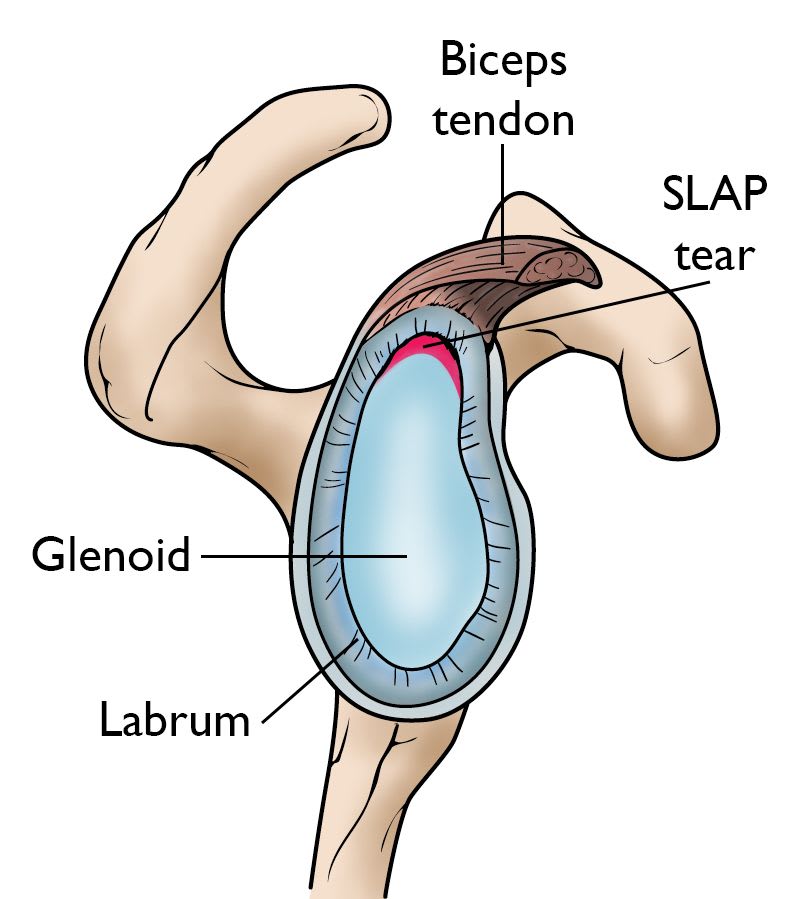We’ve all heard about The Slap at the Oscars, of course, and of jokes that are “knee-slappers.” But having a SLAP tear is no joke.
A SLAP (Superior Labrum Anterior to Posterior) tear is a tear of the labrum – a ring of tissue around the socket of the shoulder (called the glenoid) that acts as a suction-cup, helping keep the shoulder in place and moving. Tears of the labrum can occur at any point on the “ring” and the type of tear depends on the type of injury. The most common tears occur at the top of the ring in the SLAP region.

While sports fans may be familiar with the term “SLAP tear” – Cleveland Browns quarterback Baker Mayfield missed a couple of games last season due to one, and St. Louis Cardinals pitcher Jack Flaherty has yet to appear on the field this season due to a tear during spring training – it is hardly limited to athletes. In fact, even the act of bracing yourself with your hands during a fall can lead to such a tear.
There are essentially three types of SLAP tears: those caused by a traumatic injury, those caused by degeneration due to normal wear and tear over time, and those involving athletes who use an overhand motion repeatedly such as quarterbacks, pitchers, tennis and racquetball players, volleyball players, and swimmers.
Treatments can vary depending on the patient’s age and goals. You wouldn’t approach a 17-year-old high school pitcher in the same way that you would a 63-year-old house painter. But surgery is not necessarily the best path with SLAP tears; in fact, simply by resting the affected area, patients can normally “heal themselves” over a six-to-12-week period.
How do you know you may have a SLAP tear?
Typically, you will feel deep pain inside your shoulder and may notice painful “clicking,” especially when reaching overhead. (Clicking is actually very common; only if it’s consistently painful should you be concerned.)
At that point it’s a good idea to consult with a healthcare provider, who will examine your arm and shoulder to determine their strength and range of motion. That may be followed by an MRI to glean additional information.
If pain persists, anti-inflammatory medications such as ibuprofen, a cortisone injection, and/or physical therapy is many times sufficient.
If rest, medication and therapy are not doing the job, then surgery would be the next step. Historically, SLAP tears were repaired by reattaching the torn tissue back to the bone. New research and techniques have led to improved procedures. While there is still a role for fixing SLAP tears in select patients, many patients now undergo a procedure called a biceps tenodesis. Instead of repairing the SLAP, a tendon in your shoulder is cut and reattached to a different area so that it no longer causes pain and dysfunction.
This minimally invasive procedure has led to decreased pain, faster recovery, and improved outcomes in patients with SLAP tears.
Again, SLAP tears are not a laughing matter. But knowing that there are both alternatives to surgery and new and improved surgical techniques should at least make one happier.
